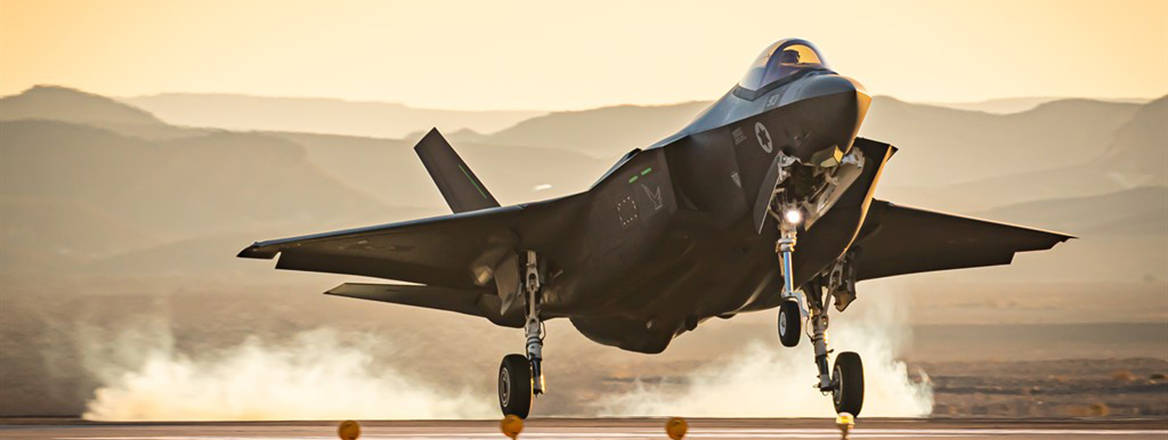Operation Days of Repentance: The Impact of Israel’s Strikes on Iran
Israel’s recent strikes on Iran’s military infrastructure signal the vulnerability of Tehran’s air defences and expose the limitations of its regional deterrence strategy.
In the early hours of 26 October, Israel announced that it had launched ‘precise and targeted’ strikes on ‘military targets’ in Iran, as part of Operation Days of Repentance, its much-awaited response to the Iranian ballistic missile attack at the start of the month.
Video from Iran appeared to show air defences active over Tehran. The Israelis have briefed that there were three waves of strikes, apparently involving around 100 aircraft, including drones, all of which returned home safely. Footage being shown on Israeli television shows a mixture of F-15 and F-16 aircraft preparing to launch, though there is speculation that Israeli F-35I were also involved. It does not sound like Israeli ground-launched ballistic missiles were used; the leaked US assessment released online recently suggested that air-launched ballistic missiles were being readied for use by the Israeli Air Force. These are suspected to have been used in the April attack near Esfahan, and their range means they could have been launched from well outside Iranian airspace. At least one journalist has been briefed that Israeli aircraft breached Iranian airspace, a claim that lends weight to the use of F-35Is.
The scale of the strike and (apparent) avoidance of civilian areas makes this look far more precise than the equivalent Iranian attack, as well as justifying it as a defensive measure
It now seems likely that the route used by the Israeli Air Force involved flying through Syrian airspace and launching from over Iraq, although there would have been a risk of giving early warning to Iran if detected by Syrian radar (or Russian radar based in Syria). Recent regional diplomacy by Iran might have resulted in the Gulf states not wanting their airspace to be used by Israeli aircraft. Israeli officials briefing that the waves of strikes included hitting targets in Syria and Iraq could be misdirection, but more likely indicates that this was indeed the route taken, and that radars and threats along the way were suppressed or destroyed to clear a path. Iraq has since complained to the UN about violations of its airspace. The alternative route would have been a very long diversion down the Red Sea and around the Arabian peninsula: this would have required multiple mid-air refuelling operations, although the Israelis have demonstrated this capability recently when striking Houthi targets in Yemen, and have rehearsed it extensively over the years.
The ‘Goldilocks Option’: What was Struck?
The Israelis claim to have struck air defences, missile production and ‘additional aerial capabilities’. There are no current nuclear targets in the areas identified (other than a research facility and reactor in Tehran), nor have we seen suggestions yet that oil refining or production facilities were struck directly. Details now being briefed to US media suggest that air defence systems (Russian-supplied S-300s, including radars) were struck, including those protecting facilities like the Abadan oil refinery and the Bandar Imam Khomeini petrochemical complex. In addition, there are images suggesting that some missile development and drone facilities operated by the Islamic Revolutionary Guard Corps (IRGC) at Khojir and Parchin (in and around Tehran) were also struck, as well as possibly the missile test facility at Shahroud. Parchin also included facilities previously identified as being part of Iran’s research into nuclear weapons development before it was suspended.
Impact and Implications: Iran is Vulnerable
This Israeli operation was considerably more extensive than April, but was still a restrained response aimed at emphasising Israel’s conventional military superiority and removing threats in the form of missile production facilities, while not appearing ‘escalatory’. Striking Tehran makes public the Israeli ability to hit Iran’s capital and defeat its air defences, but the scale of the strike and (apparent) avoidance of civilian areas makes this look far more precise than the equivalent Iranian attack, as well as justifying it as a defensive measure. The picture that is emerging is one of significant damage to Iranian air defences as well as missile launch facilities, both of which would be intended to show the Iranians that they are vulnerable to further strikes if they attempt retaliation. There is some speculation that all of Iran’s S-300 batteries have now been struck and possibly destroyed. These have hardly performed well to date, but if they have been stripped away entirely – leaving Iran with only domestically produced systems – this will increase the sense of vulnerability the regime feels. It is also hardly a resounding success for Russian military exports, especially following similar Ukrainian successes against the S-300).
Moreover, the complexity of the operation should not be underestimated. Over 100 aircraft would be a significant proportion of the Israeli Air Force’s combat fleet (estimated at between 270 and 300), which has been operating at a ferocious tempo for over a year, especially during its campaign in Lebanon. This is alongside the deployment of airborne refuelling, surveillance, and command and control capabilities over a round trip claimed to be 1,600 km.
The nature of the operation looks like a win for US leverage, albeit bought with the deployment of THAAD and 100 personnel to Israel. In addition, the restraint on display has probably been met with a sense of relief among Gulf oil producers, as the measured nature of the attack avoided disruptions to regional energy supply chains, which had been a growing concern during the weeks of heightened speculation. They have also avoided being directly implicated in the attacks (and have issued the predictable responses criticising them), while benefitting from Iranian military capabilities being further degraded. Meanwhile, Israel’s use of Syrian and Iraqi airspace comes at little cost, as Iran is unlikely to retaliate against either country, while Israel has been able to reaffirm its dominance of regional air activity.
The Iranian Response
Iranian media tried to immediately downplay the impact – despite reports of four Iranian military personnel being killed – but the regime is probably still evaluating the attacks, and the Supreme Leader issued an equivocal statement on 27 October. Iranian officials admitted there had been attacks on border radar stations in the provinces of Tehran, Ilam and Khuzestan but claimed that these had been ‘successfully countered’ and that Israel’s long-range, air-launched missiles carried ‘very light warheads – about one-fifth the size of Iranian ballistic missile warheads’. The Iranian regime appears to be trying to limit public demand for a military retaliation against Israel. But regardless of how well it can hide any damage, this is the largest direct conventional attack on Iranian territory since the Iran–Iraq War (including both fighting with the Iraqis and the US strikes on the Iranian navy under Operation Praying Mantis). This needs to be factored in to understanding the psychological impact, especially if the taboo on direct strikes on Iran that are formally declared appears to have been shattered (the April attack on Esfahan was never formally acknowledged by Israel).
What Next?
Iranian proxy response options have been limited by the damage done to both Hamas and Hezbollah, while the US has bolstered Israeli air defences with the deployment of additional ballistic missile defences (though the reported arrival of yet another THAAD battery has been disputed). However, beyond this set of direct exchanges, the progress of the fighting in Gaza and Lebanon remains a potential trigger for further confrontation. Iran is reportedly still trying to help Hezbollah rebuild, and there is still the possibility that the Israelis will choose to launch attacks that kill (for example) IRGC Qods Force personnel in Lebanon or Syria; there has been no confirmation of the condition of the head of the Qods Force for several weeks.
Regardless of how well the regime in Tehran can hide any damage, this is the largest direct conventional attack on Iranian territory since the Iran–Iraq War
Iran is still caught in a dilemma about how to respond to the stripping away of its deterrent in the form of its regional partners, and harassing attacks by Hezbollah or the Houthis could still provoke a response if they hit a sensitive target or cause high-profile civilian casualties. We still don’t know the extent to which more aggressive elements in the Iranian system might be advising the Supreme Leader, and media reporting and government briefings in Europe and the Middle East continue to highlight Iranian covert influence and assassination planning or operations. Tehran’s latest messaging hints at a pause for recalibration now that Israel’s anticipated retaliation has played out. This is reinforced by statements from the Iranian military, which have affirmed Tehran's ‘right to take lawful and legitimate action at an appropriate time’, while also emphasising the need for a ‘lasting ceasefire in Gaza and Lebanon’.
Israel's strikes have exposed Iran's vulnerabilities, particularly the apparent degradation of its air defence systems. This also underscores the limitations of Tehran's forward-defence doctrine, which relies on proxies to shield Iran from direct conflict. Given these setbacks, Iran is probably keen to avoid an extended period of direct confrontation with Israel. While Tehran cannot feasibly abandon its support for groups like Hezbollah and Hamas in the near term, it is likely to recalibrate its strategy to reinforce internal stability and safeguard its broader regional interests. Moreover, the debate over the status and role of its nuclear programme will continue to rage, especially around whether or not there is utility in maintaining its threshold status, or whether – given the vast gap in conventional capabilities – further steps might be necessary to try to bolster any deterrent effect.
An initial judgement might therefore be that this operation looks to have put a cap on this bout between Israel and Iran, but the underlying points of friction remain: the progress of Iran’s nuclear programme, the scale of the threat to Israel, proxy activity across the region, and the status of Israeli hostages.
The views expressed in this Commentary are the authors’, and do not represent those of RUSI or any other institution.
Have an idea for a Commentary you’d like to write for us? Send a short pitch to commentaries@rusi.org and we’ll get back to you if it fits into our research interests. Full guidelines for contributors can be found here.
WRITTEN BY
Matthew Savill
Director of Military Sciences
Military Sciences
Dr Burcu Ozcelik
Senior Research Fellow, Middle East Security
International Security




